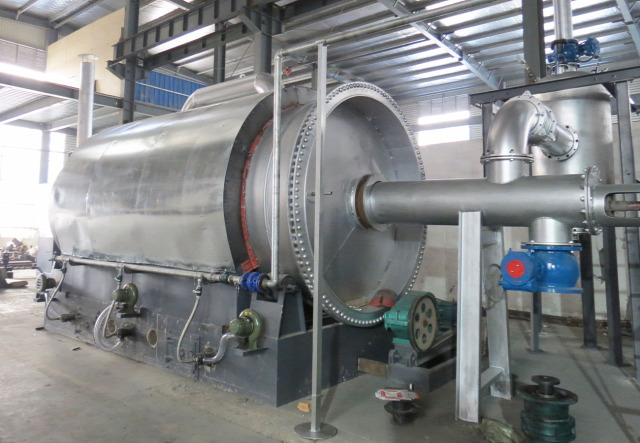A small pyrolysis machine offers a promising solution for converting non-degradable waste, such as used tires, into valuable products like oil. By utilizing a chemical reaction, these machines can efficiently break down organic matter in tires to produce tire pyrolysis oil, carbon black, steel wire, and combustible gas. In this article, we will explore the pros and cons of investing in a small pyrolysis plant for sale, highlighting its advantages for both the environment and profitability.

Advantages of Small Pyrolysis Machines:
Environmental Benefits:
Tire pyrolysis plants contribute to waste reduction by recycling non-degradable waste.
The process is environmentally sound, producing minimal pollution.
It helps combat environmental issues associated with tire disposal, such as landfill congestion and potential air and groundwater contamination.
Pyrolysis reduces the demand for new raw materials by providing an alternative source of energy-rich products.
Energy Generation and Resource Recovery:
A small pyrolysis machine can process six to ten tons of waste per day, enabling significant resource recovery from discarded tires.
The byproducts generated during the pyrolysis process, such as tire fuel and electricity, can be utilized as clean energy sources.
The extracted oil can be further processed into tire fuel, expanding its usability and reducing reliance on fossil fuels.
Economic Viability:
Pyrolysis plants offer a profitable investment opportunity due to the increasing demand for recycled products.
The recovered oil and carbon black can be sold as valuable commodities in various industries.
Investing in a pyrolysis machine can create job opportunities, supporting local economies and contributing to sustainable development.

Versatility and Reusability of Byproducts:
The byproducts obtained from the pyrolysis process have multiple applications in different industries.
Carbon black, for example, can be used in tire manufacturing, ink production, and as a reinforcing agent in rubber products.
The combustible gas produced can serve as an energy source for heating the pyrolysis reactor, reducing operating costs.
Considerations and Potential Challenges:
Initial Investment and Operational Costs:
Acquiring a small pyrolysis machine requires a significant upfront investment.
Operating costs include maintenance, raw material supply, and energy consumption.
Proper financial analysis and planning are essential to ensure long-term profitability.
Regulatory Compliance and Environmental Standards:
Pyrolysis plants must comply with local environmental regulations and obtain necessary permits.
Adequate pollution control measures should be implemented to minimize emissions during the pyrolysis process.
Technology Advancements and Market Conditions:
The waste recycling industry is evolving rapidly, with newer technologies and advancements becoming available.
Stay updated on market trends, technological innovations, and customer demands to remain competitive.
Conclusion:
Investing in a small pyrolysis machine offers significant advantages in terms of waste reduction, environmental sustainability, and profitability. These machines enable efficient conversion of non-degradable waste like used tires into valuable products, such as tire pyrolysis oil and carbon black. However, careful consideration of costs, regulatory compliance, and market conditions is crucial before making an investment decision. By weighing the pros and cons, businesses can make informed choices to contribute to both their own success and a greener future.

